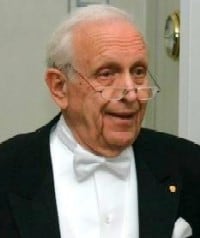By James Dacey
What is it that makes a dedicated scientist out of a kid with an everyday background? This is how Roy Glauber opens his autobiography on the Nobel Prize website, having shared the award in 2005 for his pioneering theoretical work on quantum optics. I recently caught up with Glauber to interview him for physicsworld.com to discover a bit more about his remarkable life in physics.

Glauber described how he developed an early interest in astronomy, which led him to build his own reflecting telescope before he went to high school. Once he started at the Bronx High School for Science, Glauber’s interest in mathematics was inspired by a teacher who encouraged the promising student to learn calculus by lending him an introductory textbook.
Having begun study at Harvard in the early 1940s, Glauber’s physics education was then rapidly accelerated when a stranger appeared in the physics department in 1943 asking if Glauber would like to join him to come and work on an interesting new project “out west”. That turned out to be the Manhattan Project where Glauber would join the likes of Hans Bethe and Richard Feynman in developing the fundamental science to create the atomic bomb.
Before accepting the post at Los Alamos, Glauber had not realized what the project was working towards. “It took some months to grow accustomed to the idea, and the wish to put an end to the long sequence of massive air raids first over Britain and then over Germany played an important role,” he says. In terms of his development as a physicist, however, Glauber was in awe of the project leaders and took a lot of inspiration from them. “Both Fermi and Bethe were extraordinarily effective in zeroing in on the essential points and wasting no time on affectation of any sort”.
You can read plenty more of Glauber’s fascinating reflections in my interview, which has just appeared on physicsworld.com.



